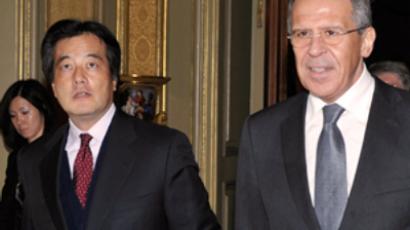Medvedev meets Caucasus leaders to talk Nagorny-Karabakh
Leaders of Russia, Azerbaijan and Armenia have held their fifth meeting in the Russian resort city of Sochi. Moscow is pushing the sides to resolve their long-standing conflict over the Nagorno–Karabakh region.
“The main result of today's talks is the agreement. Although there are parts of the deal that the sides don't see eye-to-eye on, they will develop their own ideas which will be taken into account,” said Russian Foreign Minister Sergey Lavrov.
Dmitry Medvedev discussed the issue with Armenian President Serzh Sargsyan during their talks on January 18. The same topic came up during the visit of the OSCE Minsk group to the countries earlier in January.
At the moment, the positions of the conflicting sides vary significantly. While Armenia insists on the independence of Nagorny-Karabakh, Azerbaijan is only ready to provide wide autonomy to the area.
Representatives of Nagorny-Karabakh are not participating in direct negotiations as Baku opposes the idea.
The conflict fired up in February, 1988, when the Nagorno–Karabakh autonomous area, mostly inhabited by Armenians, declared its disaffiliation with the then soviet republic of Azerbaijan.
In 1991, Nagorny-Karabakh declared its independence, leading to a war with Azerbaijan. The armed conflict lasted for almost three years, claimed 25,000 lives with over 25,000 injured. Many people had been forced to leave their homes. According to the Red Cross report, over 4,000 went missing.
Armenian armed forces helped the region in the war under the official support of Armenia and Armenians worldwide.
The dialogue to settle the conflict was started in 1991. In March of 1992, Moscow initiated the creation of the OSCE Minsk group, which includes Russia, the US, France and other countries, which oversee the negotiations.
In May of 1994, Azerbaijan, Nagorny Karabakh and Armenia signed a ceasefire agreement.
At the end of 2009, the Armenian opposition began to move towards a political settlement with their close neighbors. In October, Armenia and Turkey signed an agreement on resuming their relations and opening borders to each other.













